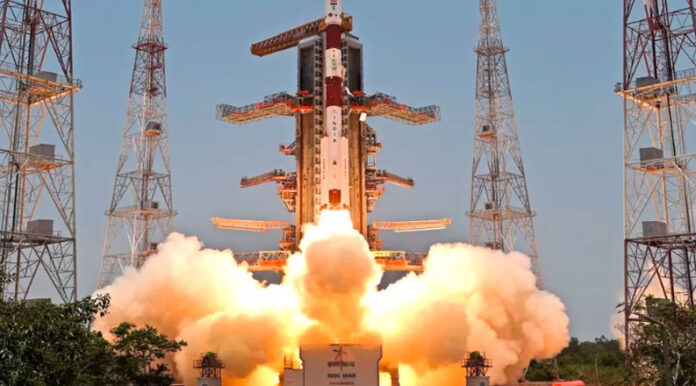Stating that the satellite is “healthy and operating nominally”, the ISRO said the first Earth-bound manoeuvre has been “performed successfully” from ISTRAC, Bengaluru.
A day after it launched the Aditya-L1 spacecraft, the country’s first mission to study the Sun, the Indian Space Research Organisation (ISRO) carried out the first orbit-raising manoeuvre Sunday.
Stating that the satellite is “healthy and operating nominally”, the ISRO said the first Earth-bound manoeuvre has been “performed successfully” from ISTRAC, Bengaluru.
“The new orbit attained is 245 km x 22459 km” and the next manoeuvre, it said, is scheduled for 0300 Hours IST on September 5.
The Aditya-L1 mission was launched from the Sriharikota spaceport shortly before noon Saturday and placed in an Earth orbit, 235 km x 19,500 km, an hour later.
Over the next few days, the spacecraft will continue to move around the Earth, progressively raising its orbit and gaining momentum, before embarking on its four-month journey to the Lagrange-1 point of the Earth-Sun system.
It is from this point, about 1.5 million km from Earth, that the Aditya-L1 spacecraft will observe the Sun and carry out experiments.
A scientist from the space agency said the mission should ideally have been launched in August. Launching it in September meant that the spacecraft had to travel longer to achieve the specific angle at which it needed to be inserted.
The heavier version of the PSLV rocket that put the satellite in orbit Saturday achieved a milestone of its own. This was the first time that the fourth stage of the PSLV was fired two separate times to insert the spacecraft in the intended orbit.
During the firing of the fourth stage of PSLV and the coasting phase in between, there were two instances – one for nearly 25 minutes and another for just over two minutes – when there were no eyes on the satellite. It was only after a ship-based station in the Bay of Bengal and then the Kourou ground station in French Guiana acquired the data that the flight path could be seen.
A scientist from the space agency said the mission should ideally have been launched in August. Launching it in September meant that the spacecraft had to travel longer to achieve the specific angle at which it needed to be inserted.
Given Below are Some ISRO Related Blogs |










